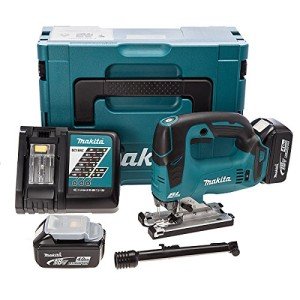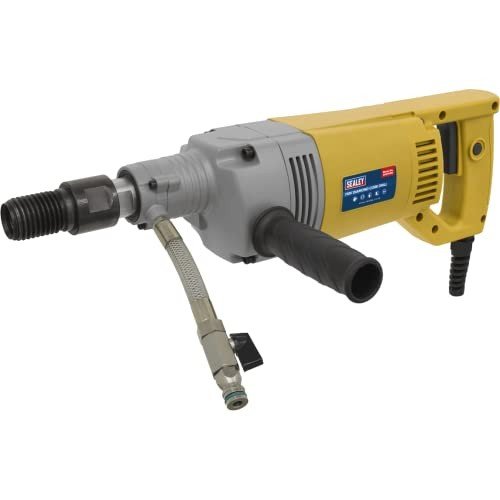The 10 Scariest Things About Shop Power Tools
페이지 정보

본문
 The Workhorse of the Shop Power Tools
The Workhorse of the Shop Power ToolsHand-held power tools are powered by internal combustion, electricity, or compressed air. They may be used to cut, drill, sanding or grinding materials.
 One of the primary power tools that every woodworker must own is a table saw, which makes quick work of almost any cutting job. Also, consider a miter saw stand, as well as a drill/driver set.
One of the primary power tools that every woodworker must own is a table saw, which makes quick work of almost any cutting job. Also, consider a miter saw stand, as well as a drill/driver set.Table Saw
A table saw is the workhorse of shop power tools, and is perhaps the most versatile woodworking tool. It can be used to rip, cross-cut, miter cut and even dado and rabbet stock. It is also able to cut angled surfaces for chests, frames or planters.
The saw has a large circular blade which spins at high speeds. The table has large dimensions that support the stock while it is passing through the blade. A blade guard protects the saw blade, preventing wood from being caught and possibly throwing it back towards the operator. The saw is also protected by a splitter or riving knife which is a vertical protrusion located just behind the blade. It can take the form of a pin or fin.
Contractor-style table saws have larger motors that are hinged from the rear of the saw and drives the blade using two or three rubber v-belts. They are typically used by carpenters, however they can also be found in shops for home use. They have more features, including the sliding mitertable, as opposed to portable ones.
Table saws that are smaller have smaller motors, which is usually belt-driven. These saws are not as powerful and are geared more toward enthusiasts and home use. Many feature the sliding miter table which allows users to make complex cuts such as those used for mirror and picture frames, boxes, cases and drawers.
It is crucial to operate a tablesaw properly to avoid injury. When performing rip cuts, always sit to the left and keep your hands away from the saw's blade. It is crucial to make use of a guide stick or push block when cutting, particularly in business settings where HSE standards require that you stay at least one hand's distance from the blade.
A simple, adjustable tapering tool that you could build yourself is the quickest and most simple method to cut tapered legs for many woodworking projects. A tapering jig can be adjusted for any angle between zero and fifteen degrees. This lets you cut any tapered legs in your workshop.
Bandsaw
A bandsaw is ideal to cut various shapes from metal and wood making it an essential tool for custom fabrication. It's also an invaluable tool to make furniture, cabinetry and other woodworking projects. The saw can be used for curved cuts including circles and is able to cut through many different materials, including ice.
There are two primary types of bandsaws: the vertical and horizontal. Vertical bandsaws are typically used for freehand cutting and excel at resawing as well as cutting in curved lines, while horizontal bandsaws are better at cutting straight and angled cuts. The saw can be operated either manually or by a powered feed system. Manual bandsaws require that the user manually lower and lift the blade after each cut. online power tools-fed systems are more efficient.
Safety is the top priority when using a bandsaw. Always wear safety gear, such as safety goggles and ear protectors to shield yourself from sawdust and noise. To prevent accidents and injuries ensure that your hands and feet clear of the blade. It's also essential to properly set up the saw for safe operation, Tools Shop Online ensuring the blade is securely secured and aligned correctly, and the guides are adjusted.
Depending on the material you're cutting it may be necessary to adjust the saw speed and feed rate in order to get optimal results. Regular maintenance which includes adjustments to tension and tracking of the blade will ensure that your bandsaw produces accurate and clean cuts and prolongs the life of its.
The blade of a bandsaw is usually made from premium steel that has been heat treated to resist the stresses and wear and tear of use. The teeth are also welded to the saw to give it a distinctive shape and preventing them from getting pulled loose or damaged by a sudden shock.
The size of the throat of the bandsaw determines how wide a piece of material it can cut. Larger throat depths enable you to cut larger pieces of lumber and are also beneficial for resawing and ripping, which are both methods that require cutting across the grain. Some bandsaws have tilting tables that can be used to make cut angles and reuse scrap wood.
Dust Collector
Woodworking tools generate chips and dust that must be gathered to safeguard your health, the shop's cleanliness, as well as the life span of your equipment. The kind of collector you require is determined by the size and number of power tools you use in your woodshop, as well as the frequency with which they are used. The best woodworking dust collectors offer superior filtering capabilities that can remove fine particles from the air and help you breathe cleaner, healthier and more relaxed while you work.
If you're operating a small one-man shop or a large production woodworking facility, Nederman has dust collection systems that meet your needs. Our woodworking dust collection, waste management and combustible dust solutions provide protection for the environment while enhancing in the efficiency of machines and quality.
There are a variety of woodshop dust collection systems available on the market that include:
A basic dust extractor is a powerful tool that can replace a shop vacuum. These units hook up to your power tool shop near me tools with the hose that connects the dust port on your machine. When you switch on your device the hose is activated and draws in dust and debris from your work area.
Depending on the model you select, the majority of dust extractors have HEPA filters that effectively eliminate dust particles that can lead to respiratory problems in the course of time. They also come with an increased CFM airflow (cubic feet per minute) to move more air. They may also have an indicator of airspeed and a system which automatically cleans the filters.
If you have an expansive shop or want to be able to use your woodworking tool while on the move, a portable dust collection system with a rechargeable power source and an integrated connector that connects directly to the power tool is a good alternative. These tools are simple to carry and are able to handle multiple tools at a time. They are small and feature a caster-base. They also come with bags or a filter for collection for easy emptying.
If you're a skilled woodworker or contractor, you may need an additional efficient dust collection system. These are more expensive than an extractor but offer a wider range of filtration. They can also be hung on a wall or placed in their own room. These units are ideal to clean up drywall, sanding and other demolition projects, as well for woodworking.
Planer
The planer is the best tool that any woodshop should have. It may not be the most glamorous or most flashy but it does make one of the biggest differences in your ability to transform rough lumber into useful and beautiful projects. It can be used to reduce boards to a specific thickness. It can be used on softwoods and hardwoods. It can also be useful for working with knotty, unwieldy, or twisted stock which is not possible to handle with hand tools stores near me.
A good quality portable planer can easily be worth the price of admission to any woodworking shop. You might be able find a planer at a reasonable price, but you must pay attention to the condition of the planer and the table for outfeed and infeed. These factors will determine how well your planer will perform and whether it will last for a long time before needing replacement parts. If the cutter head isn't of high-quality, it will quickly wear down and you might need to replace it in a very short amount of time.
The jointer and the planer are not the same machine. The jointer produces a piece of wood straight and flat, whereas the plane will cut it to a certain thickness. Some woodworkers use both machines simultaneously to complete a project. But, they're equally essential for Shop Power Tools any workshop handling rough lumber on a regular basis.
A commercial-grade planer is an excellent investment if you plan to work with wood professionally and are looking for high-quality equipment. These machines are designed to be used in situations where the speed of production is more important than surface finish. These machines will save you lots of time, but you'll need to be extremely cautious not to overload them, or they could burn out. They will also need to be maintained properly to ensure that they are operating correctly. A routine of regular maintenance in the shop can help extend the life of your planer.
- 이전글How To Make An Amazing Instagram Video About Address Collection 25.02.07
- 다음글Why Adding Address Collection To Your Life Can Make All The Change 25.02.07
댓글목록
등록된 댓글이 없습니다.

